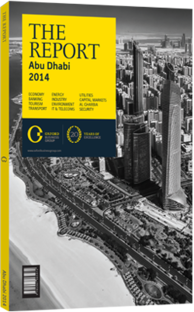A comprehensive plan: The government aims to transform surface transport in the capital
Traffic on Abu Dhabi’s roads has increased rapidly over the course of the past decade, driven by population growth, a rise in visitor numbers and greater economic activity throughout the emirate. Consequently, most of the road and highway networks – and particularly those in the capital – have become increasingly congested in recent years.
According to a forecast by the emirate’s Department of Transport (DoT), pending major changes in Abu Dhabi’s transport sector, the region’s roads could potentially reach capacity as soon as the end of 2015. Overcoming these challenges is the core objective of the Surface Transport Master Plan (STMP), a comprehensive blueprint for the expansion of all of the emirate’s transport links through 2030.
Current Transport Networks
As of the end of 2011 some 554,196 vehicles were licensed to operate in the municipality of Abu Dhabi City, according to the most recently available data from the Ministry of Interior. This figure is up considerably on 521,270 vehicles in 2010, 471,502 in 2009 and 386,853 in 2008. Reducing the number of cars on the road remains a key government priority for a variety of reasons. At the most basic level, the growing congestion on Abu Dhabi’s roads has had a negative impact on the government’s ability to provide a safe, high-quality transport system.
Increasing road congestion has also had a variety of economic and social costs, including wasted time and, more directly, wasted fuel. According to a DoT forecast from 2012, pending major changes to the transport system, the economic cost of time spent in traffic was expected to reach Dh2.5bn ($680.5m) by 2015 and Dh5.9bn ($1.6bn) by 2030. Finally, the increasing number of automobiles on the road is not in line with Abu Dhabi’s sustainability policies, which aim to minimise the transport sector’s impact on the environment.
Metro Project
In the original blueprint for the Abu Dhabi Metro project the system was set to feature 131 km of track on four individual lines. However, a feasibility study, completed in mid-2010, identified 70 km of metro line, connecting the Mina Zayed area to the airport, as the most viable. The DoT is currently finalising the preliminary engineering for the first 20-km of track, which will link Zayed Sports City with Zayed Port, and will include 13 km of track constructed above ground, with the remainder built underground. A number of multinational construction firms have expressed interest in participating in the Abu Dhabi metro project in the years since it was announced in 2009 and, as of late 2013, the government was working to select pre-qualified firms to bid on the project. The procurement phase is scheduled to begin in the fourth quarter of 2014 and the project is expected to be completed by 2021. In addition to the planned works, a new initiative is being proposed that would see the first phase of metro construction extended to reach the airport via Zayed City and Masdar City.
LRT Project
The STMP’s original light rail transport (LRT) blueprint included plans for a 340-km network of two-way track in the capital region, with stops every 500 metres. Like the metro project, however, the LRT plan has been revised somewhat in recent years, though the DoT has not written off the option of eventually completing the full project as originally planned.
Construction on the first phase of the project – which is set to include 51 km of track distributed across three lines – will be ready to enter the procurement phase in the fourth quarter of 2014. Once it is completed, the LRT is expected to link the city centre of Abu Dhabi with all other parts of the metropolitan area, including the Mussafah industrial zone, the airport and Masdar City.
You have reached the limit of premium articles you can view for free.
Choose from the options below to purchase print or digital editions of our Reports. You can also purchase a website subscription giving you unlimited access to all of our Reports online for 12 months.
If you have already purchased this Report or have a website subscription, please login to continue.

